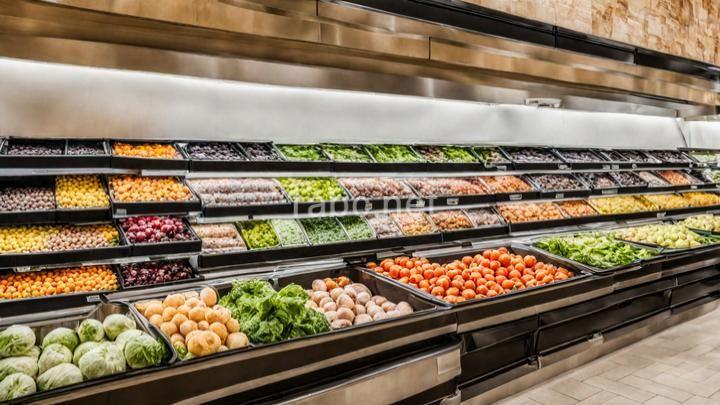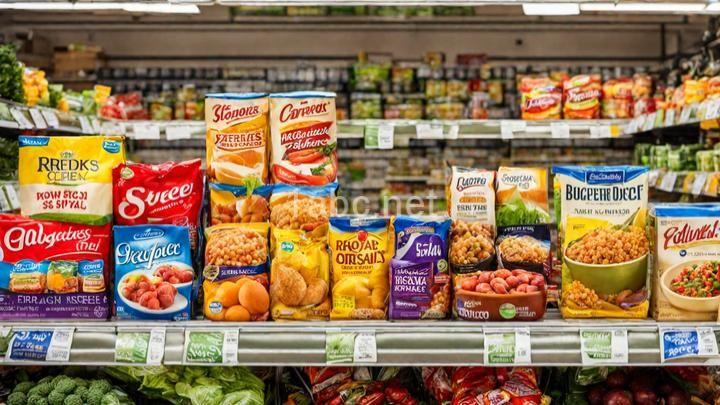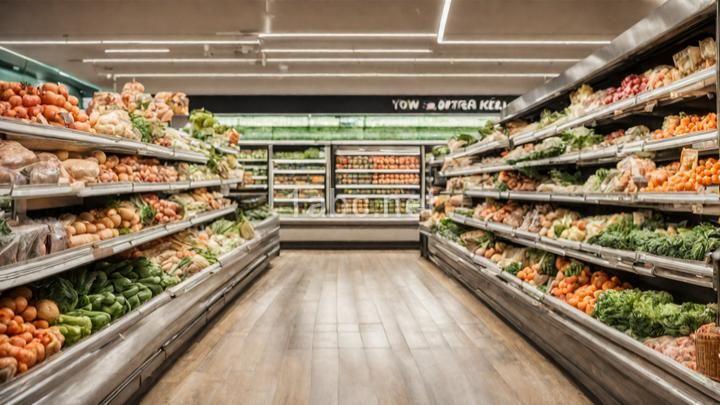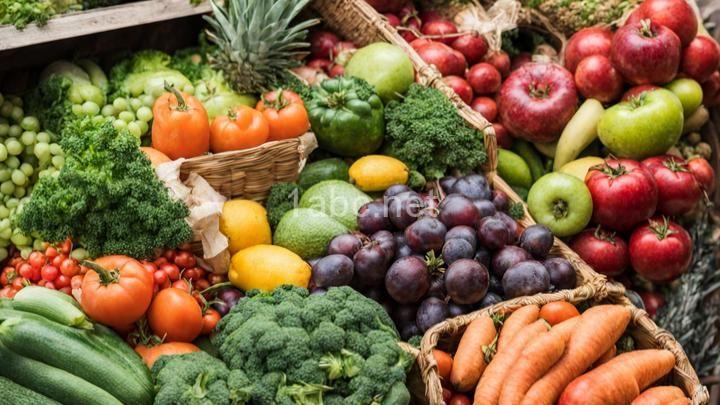Money-Saving Strategies for Smart Bulk Shopping: Food Groceries 101
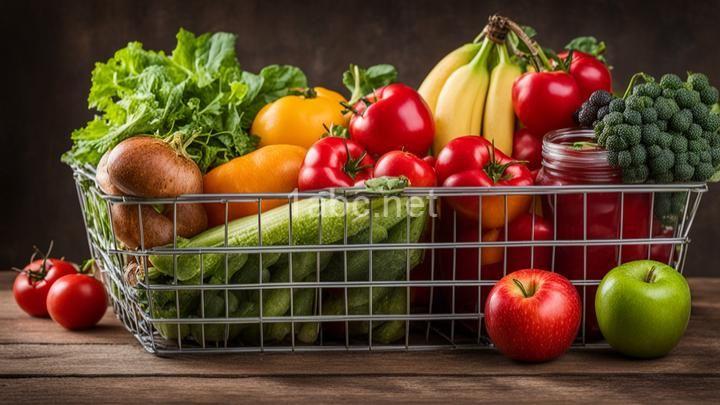
Introduction:
Are you tired of spending a fortune on groceries every month? Do you find yourself constantly questioning whether you can really afford those fancy organic vegetables? Well, you're not alone. Grocery shopping can be a real budget buster, but fear not! There is a way to enjoy good food while saving money - smart bulk shopping. In this blog post, we will explore the ins and outs of smart bulk shopping for food groceries, and how it can help you become a savvy shopper. So sit back, relax, and get ready to revolutionize your grocery shopping experience!
Section 1: Understanding Smart Bulk Shopping
Smart bulk shopping is not your average trip to the grocery store. It involves buying items in larger quantities at lower prices. Think of it as stocking up on your favorite products to last you for weeks or even months. By purchasing in bulk, you can take advantage of significant cost savings, reduce packaging waste, and enjoy the convenience of having a well-stocked pantry.
Let me share a personal story to illustrate the benefits of smart bulk shopping. A few months ago, I decided to try my hand at bulk shopping, and the results were astounding. Not only did I save a considerable amount of money, but I also found myself wasting less food. It was a win-win situation!
Section 2: Planning Your Bulk Shopping Trip
The key to a successful bulk shopping trip lies in proper planning. Before you head to the store, take some time to create a detailed grocery list. Consider your meal plans for the upcoming weeks and take into account your family's preferences and dietary restrictions. This will help you avoid unnecessary purchases and ensure that you have all the essentials on hand.
To make your life easier, make use of online resources or mobile apps that can help you find the best deals and compare prices. These tools can be a game changer when it comes to saving money and finding the best value for your hard-earned cash.
Section 3: Finding the Right Stores
Now that you're armed with a well-thought-out grocery list, it's time to find the right stores for your bulk shopping needs. Warehouse stores like Costco or Sam's Club are well-known for offering quality products at discounted prices. These stores often require a membership, but the savings you'll reap will more than make up for the membership fee.
If warehouse stores aren't your cup of tea, consider exploring local farmers' markets or co-op stores. Not only will you find fresh produce and unique items, but you'll also be supporting local farmers and businesses. Keep an eye out for any exclusive membership programs or loyalty cards offered by these stores. These can provide additional discounts and perks that will further enhance your savings.
Section 4: Decoding Unit Prices and Cost Comparisons
When it comes to bulk shopping, understanding unit prices is essential. Unit prices allow you to compare the cost of different package sizes or brands, helping you make informed decisions about which product offers the best value for your money. To calculate the cost per unit, simply divide the total price by the number of units in the package.
Let's say you're torn between two brands of peanut butter - one priced at $4.99 for a 16-ounce jar and another priced at $6.99 for a 24-ounce jar. By comparing the unit prices, you can determine that the first brand costs approximately $0.31 per ounce, while the second brand costs around $0.29 per ounce. Armed with this information, you can confidently choose the option that gives you the most bang for your buck.
Section 5: Maximizing Shelf Life and Storage Tips
Buying in bulk means you'll have a surplus of food on hand, so it's important to know how to maximize shelf life and minimize waste. Proper storage techniques are key to keeping your bulk purchases fresh and edible for as long as possible. Different types of food products require different storage methods, so let's dive into a few tips and tricks.
For perishable items like meat or dairy products, make sure to refrigerate or freeze them promptly. Consider investing in a vacuum sealer to remove excess air and extend the shelf life of your items. When it comes to dry goods like rice or pasta, storing them in airtight containers can keep them fresh for months. And don't forget about the power of freezing! Many fruits and vegetables can be frozen for later use, allowing you to enjoy them long after their peak season.
Section 6: Avoiding Impulse Purchases
One of the biggest challenges of bulk shopping is resisting the temptation to make impulse purchases. When you're faced with bulk quantities and enticing deals, it's easy to get carried away and fill your cart with items you don't really need. To overcome this challenge, it's crucial to stay focused and disciplined during your shopping trips.
Stick to your grocery list religiously and pause before adding any item to your cart. Ask yourself if it's something you truly need or if it's just a fleeting desire. By taking a moment to evaluate your purchases, you'll be able to avoid unnecessary expenses and stay on track with your budget.
Conclusion:
Congratulations! You've made it to the end of our money-saving journey through the world of smart bulk shopping for food groceries. We've covered the basics of smart bulk shopping, from understanding its benefits to planning your trips and finding the right stores. We've also explored the importance of unit prices, maximizing shelf life, and avoiding impulse purchases.
By implementing these money-saving strategies, you can significantly reduce your grocery bills and minimize food waste. Remember, becoming a savvy bulk shopper is a process that takes practice and perseverance. So don't be discouraged if it feels a bit overwhelming at first. With time, you'll develop your own strategies and become a master at saving money while enjoying good food. Happy shopping!
FREQUENTLY ASKED QUESTIONS
What is Money-Saving Strategies for Smart Bulk Shopping: Food Groceries 101?
When it comes to smart bulk shopping for food groceries, there are several money-saving strategies you can employ. Here are some tips to help you make the most of your shopping experience:
-
Plan your meals: Before heading to the store, take some time to plan your meals for the week. This will give you a clear idea of what items you need to buy in bulk and what you can skip.
-
Make a list: Creating a shopping list is essential to ensure that you only purchase what you need. Stick to your list and avoid impulse buying, as it can lead to unnecessary expenses.
-
Compare prices: Take the time to compare prices between different stores and brands. Look for sales, discounts, and promotions to maximize your savings. Consider using apps or websites that help you find the best deals in your area.
-
Buy in bulk: One of the main advantages of bulk shopping is the potential for significant savings. Stock up on non-perishable items like rice, pasta, canned goods, and cleaning supplies. However, make sure you have enough space to store them properly.
-
Consider joining a wholesale club: Wholesale clubs like Costco or Sam's Club offer great deals on bulk items. If you have a large family or use certain products frequently, a membership can be a worthwhile investment.
-
Check unit prices: When comparing prices, pay attention to the unit price rather than the overall price. This will help you determine which option offers the best value for your money.
-
Use coupons and loyalty programs: Take advantage of coupons and loyalty programs offered by stores. Keep an eye out for manufacturer coupons in newspapers or online, and sign up for loyalty programs to earn discounts or cashback rewards.
-
Don't forget about perishables: While buying perishable items in bulk may not always be practical, you can still save money by purchasing larger quantities and properly storing or freezing them.
-
Consider partnering with others: If you have friends or family members who also want to save money, consider joining together to buy items in bulk. This way, you can split the cost and enjoy the benefits of bulk shopping without the need for excessive storage.
Remember, the key to successful bulk shopping is planning, comparison, and smart decision-making. By implementing these strategies, you can save money while still enjoying the convenience and benefits of buying in bulk. Happy shopping!
How can smart bulk shopping help me save money on groceries?
Smart bulk shopping can be a great way to save money on groceries. By purchasing items in larger quantities, you can often take advantage of lower unit prices. This can really add up over time and help you stretch your grocery budget.When you buy items in bulk, you can also reduce the number of trips you need to make to the store. This not only saves you time but also helps you avoid impulse purchases that can quickly add up. By planning ahead and buying in bulk, you can stock up on essentials and reduce the temptation to make unnecessary purchases.
Another benefit of bulk shopping is that it allows you to take advantage of sales and discounts. Many stores offer discounts when you buy items in larger quantities, so by purchasing in bulk, you can save even more money. Additionally, buying in bulk reduces the packaging waste associated with smaller, individually packaged items, which is better for the environment.
To make the most of smart bulk shopping, it's important to consider the shelf life of the items you're purchasing. Make sure you can use or store the items before they expire to avoid waste. It's also a good idea to compare prices and do some research before making a bulk purchase to ensure you're getting the best deal.
Overall, smart bulk shopping can help you save money on groceries by taking advantage of lower unit prices, reducing the number of store trips, and allowing you to stock up on essentials. Give it a try and see how it can benefit your budget!
Are there any specific tips or techniques mentioned in the guide?
Yes, the guide provides a variety of specific tips and techniques to help you achieve your goals. Some of the tips include setting clear and realistic goals, breaking tasks into smaller steps, prioritizing your tasks, utilizing time management techniques, and practicing self-care to maintain productivity. The guide also suggests techniques such as the Pomodoro Technique, where you work for a set amount of time and then take short breaks to increase focus and productivity. Additionally, it emphasizes the importance of staying organized, utilizing tools and apps to stay on track, and seeking support from others when needed. Overall, the guide offers a comprehensive range of tips and techniques to help you improve your productivity and achieve success.
Is this guide suitable for everyone?
Yes, this guide is designed to be suitable for everyone. Whether you are a beginner or have some experience in the subject matter, this guide provides step-by-step instructions and helpful tips that can be easily understood and implemented. It takes into account different learning styles and levels of familiarity with the topic, ensuring that everyone can benefit from the information provided. So regardless of your background or skill level, you can confidently use this guide to enhance your knowledge and skills.
